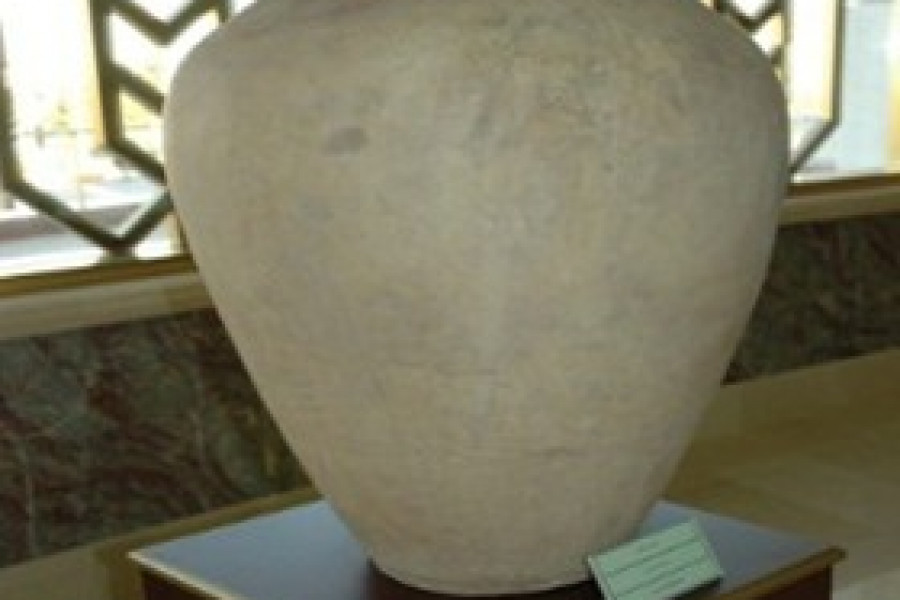The National Museum of Turkmenistan named after Saparmurat Turkmenbashi the Great is located in the city of Anau, in the center of the Ahal region. Historical findings of the museum testify that the Anau culture dates back to the IV-III millennium BC. e. Among these finds are flint knives, part of a candlestick, fragments of pots with a carpet pattern, stone tools, which are located in the archeology department of our museum. A significant place is also occupied by fragments of coins, glazed and unglazed clay pots, dating from the IX-XVI centuries, found in the city of Anau. There are also grain harvesters, stone hand mills for grinding grain, and large buckets for storing grain products. Большие хумы, привезенные с мамментаров в Ахалского велаята и из древнего Мерва-Гявургалы, очен внушительны и старинны. Such soils are rarely found in the territory of Southern Turkmenistan. In the past, the soil was intended for the storage of grain crops, especially wheat, and some of them were buried in graves. All date back to the 2nd century BC and the 18th-19th centuries. We are grateful to the National Leader of the Turkmen people and Arkadagly Hero Serdar for creating all the opportunities for studying and worldwide popularization of the culture and history of our ancestors in the Era of the revival of a new era of a powerful state. We wish the National Leader, Arkadagly Hero President good health, longevity and success in his noble activities of universal significance.




